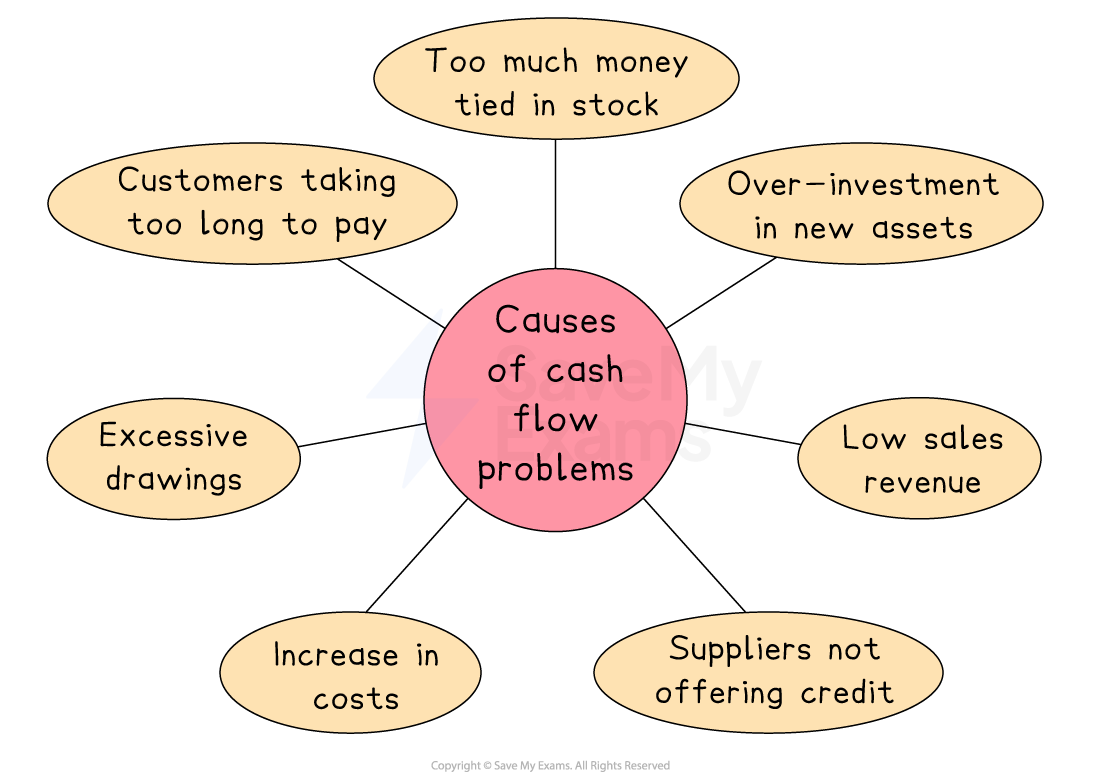Cash Flow Problems: Causes & Solutions (SQA National 5 Business Management): Revision Note
Exam code: X810 75
Causes of cash flow problems
Cash flow problems happen when a business does not have enough cash available to pay its bills or meet day-to-day expenses
Even profitable businesses can face cash flow difficulties if money coming in and going out is poorly managed
The main causes of cash flow problems

1. Customers taking too long to pay
If customers are given long credit terms or delay payment, the business may run short of cash
Late payments reduce cash inflow and can make it difficult to pay suppliers or wages on time
2. Too much money tied up in stock
Holding large amounts of unsold stock means that cash is locked up in products sitting on shelves rather than available for other uses
Poor stock control can lead to storage costs and spoilage, further increasing cash pressures
3. Over-investment in new assets
Buying expensive machinery, vehicles or equipment all at once can drain available funds
Although these assets may improve efficiency in the long term, they create short-term cash shortages
4. Low sales revenue
If sales fall due to reduced customer demand, increased competition or poor marketing, less money flows into the business
With fewer sales, the business may struggle to cover regular outgoings like rent, wages and supplies
5. Suppliers not offering credit
If suppliers require immediate payment or offer only a short credit period, cash can leave the business quickly
This creates a mismatch between when the business pays its suppliers and when it receives payment from customers
6. Increase in costs
Unexpected rises in costs, such as energy bills, rent or raw materials, can quickly reduce available cash
If prices charged to customers are not increased at the same time, cash can become tight
7. Excessive drawings
In small businesses, if the owner withdraws too much money for personal use (known as drawings), it can leave the business without enough funds to operate effectively
This can cause delayed payments or reliance on short-term borrowing, such as overdrafts
Solutions for cash flow problems
There are several ways in which a short-term cash-flow problem can be resolved
Solving short-term cash-flow problems

A business often uses more than one method to ensure cash-flow remains positive, e.g. combining an overdraft and reducing the time period available for their customers to pay them
Methods used to overcome short-term cash-flow problems
Method | Explanation |
|---|---|
Seek to increase the trade credit period |
|
Shorten debtor repayment periods |
|
Apply for a bank loan |
|
Delay plans to purchase new equipment |
|
Only sell in cash, not credit |
|
Overdraft facility |
|
Examiner Tips and Tricks
A common mistake is listing causes without offering fixes. Try to link each problem to a solution - for example, late customer payments → tighten credit terms; high expenses → cut unnecessary costs
Clear cause-and-solution pairs show strong understanding

Unlock more, it's free!
Did this page help you?